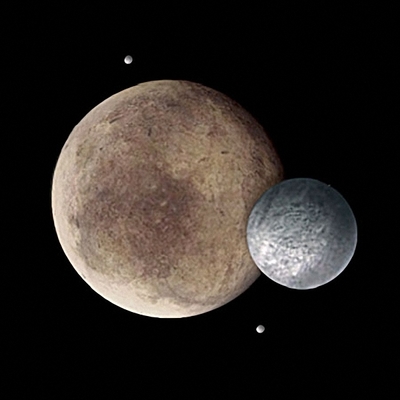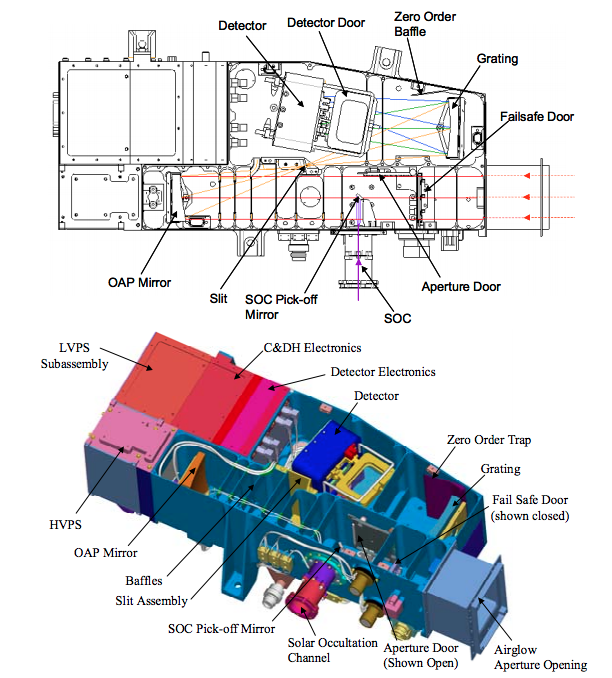Everything indicates that this moon does not have any significant atmosphere, but, just in case, one of the main tasks of the New Horizons probe will be to determine if this hypothesis is correct. Theoretically, Charon should have long since lost all volatile clouds that could create an atmosphere, but recent research suggests that a transient atmosphere could be created during one of the summers of the complex stations through which the Pluto system passes, thanks to the contribution of ice from comets or from Pluto itself.

In any case, the theoretical models predict that the pressure of this miniatmosphere would be very low, from 0.1 to 10 nanobars. Its composition could incorporate methane, nitrogen or carbon monoxide in various proportions, although the main composition of Charon's surface appears to be water ice.
The New Horizons will determine if Charon has an atmosphere during the July 14 flyby: just as the Sun sets behind Charon's disk seen from the spacecraft, the ultraviolet spectrograph ALICE will observe the edge of the satellite to determine if the small world is surrounded for an atmosphere. The problem with this technique is that it will only serve to know if Charon has a global atmosphere (or on the terminator), but it will not be useful if the atmosphere is local and limited to the daytime hemisphere of the moon.

However, the mission team led by Alan Stern has achieved a new technique that can tell us if Charon has an atmosphere before the match. To do this, ALICE will observe the light reflected by the daytime side of Charon during the days leading up to the meeting. If all goes well, ALICE will have an absorption spectrum of Charon and detection, an atmosphere with a minimum minimum of 0.1 nanobares.
With such figures, one might think that this atmosphere is practically irrelevant. However, remember that the temperatures of the Pluto system produce tremendously complex and interesting interactions between methane, nitrogen and carbon monoxide. And despite its small size -Caron has barely 603 kilometers of radius-, this moon promises to make even more interesting the already fascinating Pluto system.

The ALICE spectrograph is a small (4.4 kg) but powerful instrument that works in the wavelength range from 520 to 1870 angstroms. It has been designed precisely to study in detail the atmosphere of Pluto and is based on the instrument of the same name that carries the European probe Rosetta.
As with most mysteries surrounding Pluto and Charon, next July 14 we will know if Charon has an atmosphere or not. And, to open your mouth, nothing better than watching the next video work of the great Erik Wernquist - the author of Wanderers.
Congratulations @mofeta! You have completed some achievement on Steemit and have been rewarded with new badge(s) :
Click on any badge to view your own Board of Honor on SteemitBoard.
For more information about SteemitBoard, click here
If you no longer want to receive notifications, reply to this comment with the word
STOPDownvoting a post can decrease pending rewards and make it less visible. Common reasons:
Submit